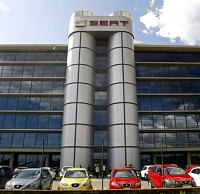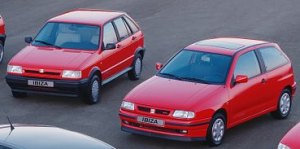
| - |

2019: 574,000 units
2018: 518,000 units
2017: 468,431 units
2016: 408,703 units
2015: 400,037 units
2014: 390,505 units
2013: 355,004 units
2012: 321,000 units
2011: 350,000 units
2010: 339,501 units
2009: 337,000 units
2008: 368,000 units
2007: 411,000 units
2006: 430,000 units
2005: 415,000 units
2004: 442,000 units
2003: 460,000 units
2020 production by models:
Leon: 124,323 units
Arona: 78,823 units
Ateca: 76,710 units
Ibiza: 74,564 units
Tarraco: 18,726 units
Alhambra: 14,672 units
Cupra Formentor: 11,041 units
Mii: 7,593 units
The cars of SEAT are all built on Volkswagen group platforms, although in recent years it has more autonomy of design and engineering.
The relationship between SEAT and FIAT deteriorated in the late 1970s and led to their break-up in 1981. The Spannish used its own effort to develop its first car, Ibiza, albeit with Porsche-developed engines and design by Giugiaro. However, the company was still notorious for poor build quality and its prospect as an independent car maker was hardly promising.
 1984 Ibiza Mk1 (left) and 1993 Ibiza Mk2
(right)
1984 Ibiza Mk1 (left) and 1993 Ibiza Mk2
(right)In 1986, it found Volkswagen group as its new partner, or more precisely, new owner. VW took 51% stakes in SEAT and then raised to full ownership 4 years later. The second generation Ibiza in 1993 was the first product developed with Volkswagen's involvement. Later on, all SEAT models were transferred to Volkswagen group platforms, such as Arosa (Lupo), Ibiza (Polo), Toledo / Leon (Golf) and Exeo (Audi A4). Volkswagen also strengthened it by building a modern plant in Martorell and a design center.